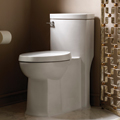Water conservation is a hot topic at the ICC Green Code hearings.

Sitting through the ICC Green Code hearings in Phoenix was completely different than the IAPMO Green Supplement hearings.
IAPMO utilizes a consensus committee. ICC’s final voting is done by the organization’s code-enforcement members. Another difference between the two organizations is the ICC Green Code covers everything - building, energy, mechanical and plumbing.
Having sat through many ICC code hearings, I now have a good sense of the voting membership. Typically after hearing testimony I can predict, within 90% accuracy, how the vote is going to turn out. The same was not true for the Green Code hearings. It was almost impossible to figure out the voting pattern. There seemed to be no rhyme or reason to how people voted.
Of course, with the normal codes, the goal is protection of public health, safety and welfare. With the Green Code, there is no similar mantra. It is whatever you think is green - whatever that means.
One of the best lines came during the discussion on the energy provisions of the code. As you can imagine, this section of the Green Code had the most discussion. A green advocate testified that a building cannot be green unless it generates some of its own energy. Wow! What a statement to make.
All I thought about were all the buildings that have been classified as green that don’t generate any of their own energy. Are they no longer green?
Many of us listening to this testimony envisioned every green building having either solar panels, wind turbines, co-generation plants or a nuclear power generator. I wondered if the use of ground water for heating or cooling would qualify. That never seemed to be answered since most of the discussion revolved around solar energy.
Both the plumbing and mechanical sections had a single public comment that addressed all the issues for updating the Green Code. The single public comment was developed by a group of concerned professionals highly respected in the green code initiative. The single public comment contained modification to the code that included every green provision discussed during the initial hearings. All of the changes were compiled into a single public comment.
Frankly, when reviewing the public comment, one would think: “Why bother having all this discussion? You approve this change and you are done with it.” That is how simple it could have been.
Unfortunately, the voting membership viewed the single public comment as having all the green issues shoved down their throats without the opportunity to discuss each issue independently. So, rather than discussing the single public comment first, ICC moved the comment to the end of the agenda to discuss all the other public comments first. Mind you, all the individual public comments had proposals that were included in the single public comment.
When the dust finally settled, approximately 90% of the single public comment proposals were accepted on an individual basis. The final 10% also should have been accepted but were not. When the single public comment was addressed at the end of the hearing, it was soundly defeated in favor of all the individual changes to the Green Code.
Water conservation
The biggest change at the hearing that impacts plumbing is the mandate of water conservation. The previous edition of the ICC Green Code had performance requirements for calculating how much water you would save in a building. The change mandates fixtures using lower volumes of water.
The maximum flush volume permitted for a water closet is 1.28 gpf. Similar to IAPMO, the Alliance for Water Efficiency added a requirement to exclude remote public water closets. For remote public water closets, the flush volume remains 1.6 gpf. Remote is defined as being more than 30 ft. from a main drain line.
Showers were lowered to a single showerhead flowing at a maximum of 2 gpm. When the shower compartment is larger than 2,600 sq. in., two showerheads are permitted - only two. The assumption is multiple people will be in the shower when it is larger than 2,600 sq. in. This finally responds to the issue of multiple showerheads. The entire purpose of water conservation is to limit the water used to take a shower. Adding showerheads is nothing more than cheating the system.
The urinal flush volume is 0.5 gpf. Kitchen sinks have a maximum flow rate of 2.2 gpm, while pre-rinse sprayers are limited to 1.3 gpm. Even drinking fountains have a maximum flow rate of 0.7 gpm.
Municipal reclaimed water is required for flushing water closets and urinals, as well as protecting floor drain trap seals whenever reclaimed water is located within 150% of the distance to the potable water supply. The code added requirements for on-site reclaimed water systems. Reference is made to NSF 350 regarding the water quality for on-site systems. This standard gears more to large systems, vs. the small systems used under a lavatory to flush the water closet.
Getting in hot wate
Perhaps the most complex change approved involves the design of a hot water distribution system. A new table was added to the code identifying how far a fixture is permitted to be located from a hot water supply loop. The loop is considered the part of the hot water distribution system that is re-circulated. The distance to the loop is based on either the length of the pipe or the volume of the piping system.
Coupled with the hot water requirements is a requirement regarding when a recirculating pump can activate to circulate the water. A continuous operating pump is not permitted under the Green Code.
Issues that ICC membership ignored included food waste. The membership added no requirements for food waste disposers or composting. Of course, like all green codes, ICC does not address the greenness of plumbing material. One of the arguing points is whether one material is greener than another. That will remain a marketing concept for manufacturers to argue.

